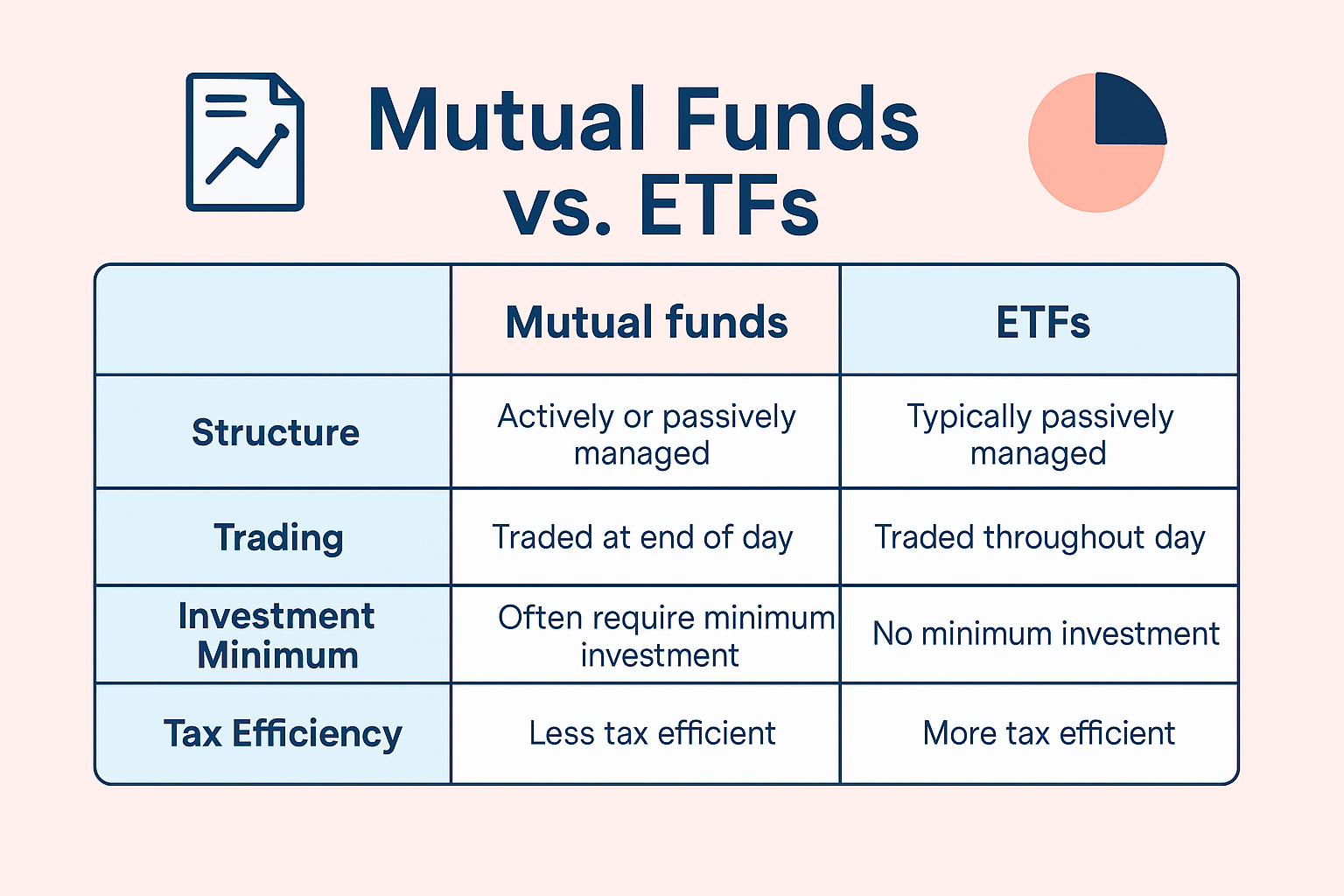ETF vs. Mutual Fund: what’s the difference?
When you’re new to investing, you quickly discover there are many ways to “buy the market” without picking individual stocks. Two of the most common are ETFs (Exchange-Traded Funds) and Mutual Funds.
On paper, they look similar: both pool money from lots of investors and spread it across dozens—or even hundreds—of companies. But in practice, they feel very different to own. The choice you make depends not just on cost, but on how you want to invest day-to-day.
What is an ETF?
An ETF trades just like a stock on the exchange.
📌 Example: Imagine you want exposure to the U.S. stock market. You could buy the SPDR S&P 500 ETF (SPY). With a single purchase, you instantly own a slice of 500 of the biggest companies in the U.S.—from Apple to Coca-Cola.
Why people like ETFs:
- You can buy 1 share for around the current trading price (e.g., $450), so there’s no big minimum.
- You can sell it instantly during market hours if you need the cash.
- Fees are extremely low—some index ETFs charge less than 0.05% per year.
👉 Good for: Beginners who want a low-cost, flexible way to invest and don’t mind placing their own trades.
What is a Mutual Fund?
A Mutual Fund also pools investors’ money, but the way you buy and sell is different.
📌 Example: A popular one is the Fidelity 500 Index Fund (FXAIX). It also invests in the 500 largest U.S. companies. But unlike an ETF, you can’t buy it mid-day. You place your order, and it executes once at the end of the trading day—at the fund’s closing price.
Why people like Mutual Funds:
- Often offered in retirement accounts (401k, pension, IRA).
- Some are actively managed, meaning a professional team chooses investments (not just an index).
- You can set up automatic contributions directly from your bank account—something ETFs don’t always make as easy.
👉 Good for: People who want to “set it and forget it” or those investing through workplace retirement plans.
What is a Stock?
Buying a stock means owning a share in a single company (e.g., Adidas, BMW, ASML).
- Pros:
- High potential returns if the company performs well.
- Direct ownership in a business you believe in.
- Easy access via apps like DEGIRO, Trade Republic, or BUX in Europe.
- Cons:
- Risky — your money depends on one company.
- Requires research and constant monitoring.
- Best for: Investors who enjoy following markets and want the chance of big gains (but also big losses).
Which One Should You Choose?
- If you want to pick companies yourself → go with stocks.
- If you want low-cost, long-term growth → choose ETFs.
- If you want your bank to manage it for you → mutual funds may work, but expect higher fees.
Common Mistake Beginners Make
One of the biggest mistakes is thinking you need both to be diversified. In reality, a single broad ETF or mutual fund often gives you exposure to hundreds of companies. Another mistake is chasing last year’s “top performer.” Both ETFs and mutual funds go through cycles. What matters most is staying invested consistently, not jumping between funds.
Conclusion
For most beginners in Europe, ETFs are the simplest, most cost-effective starting point. They combine diversification, low fees, and easy access through platforms like DEGIRO, eToro, Trade Republic etc.




